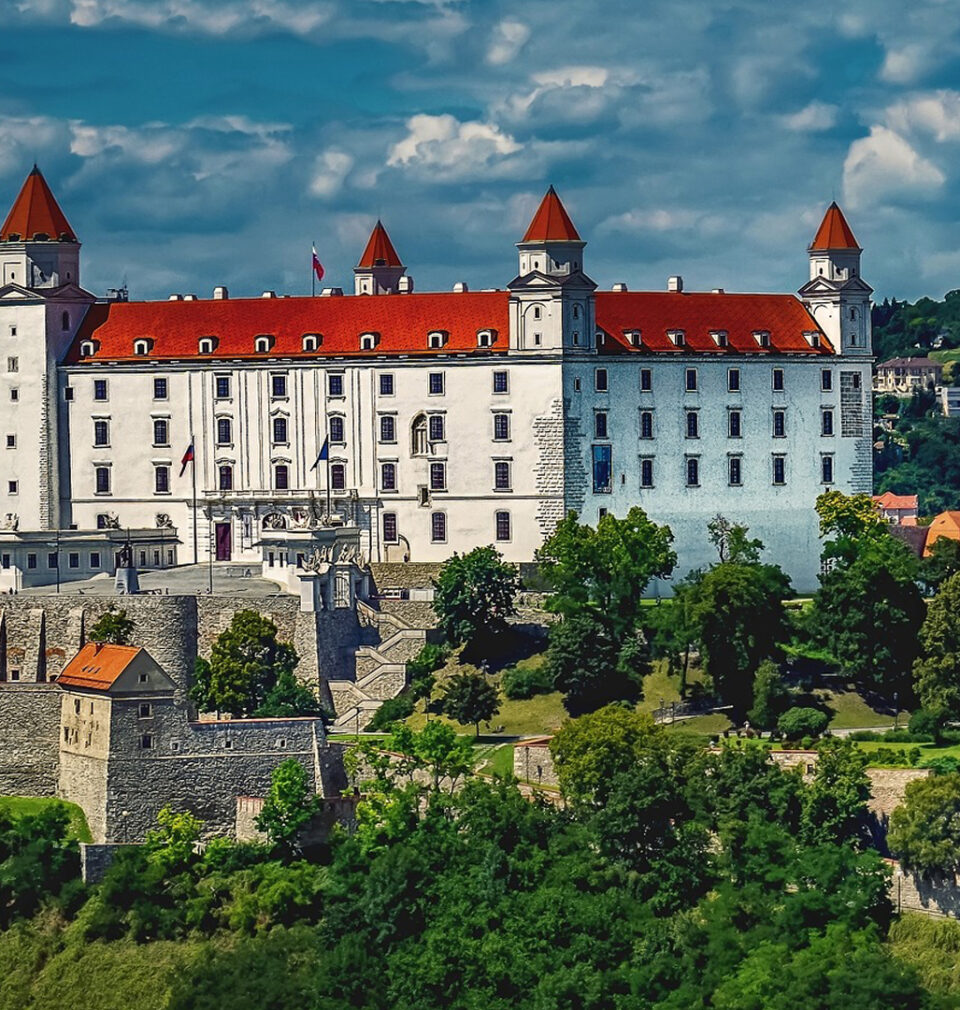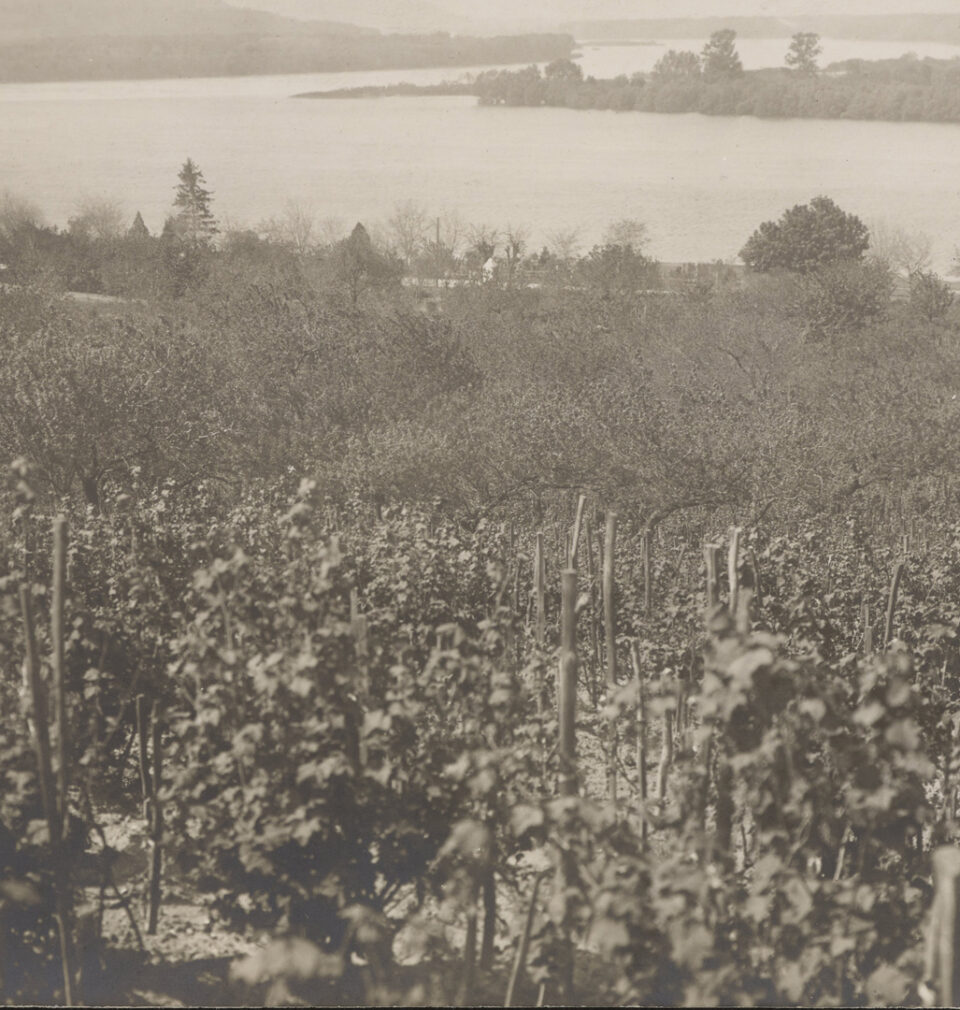
Słowacja - Slovensko - Slovakia
Slovak Architecture on the Path of Emancipation
Publication: 14 October 2021
TAGS FOR THE ARTICLE
TO THE LIST OF ARTICLESArchitecture is closely connected with the life of society – it shapes space, defines the framework of events, explains values, goals and ideals of the people who create it in a given historical moment. Many challenges as well as promises of new prospects appeared after the ordeal of the First World War in the period of building democratic Czechoslovakia. Architects were also confronted with these changes.
It is commonly known that until 1918 Slovakia was an integral part of Austro-Hungary (the so-called Upper Hungary). Its development as a province of the Austro-Hungarian Empire was organically intertwined with the development of Hungary. Another important factor for the development of architecture in Slovakia was the fact that in the political situation from that time, all provinces had a subordinate status. The growth of national culture was hampered by attempts to create one Hungarian nation, accompanied by Magyarisation. Several important factors worked to Budapest’s advantage: rapid growth of the building industry, centralisation of administration, numerous opportunities for acquiring professional education (including vocational schools), local public tenders and above all government support for local architects[1]. Because of architectural initiatives and tendencies from that time, an important role was also played by other centres in the Empire (especially Vienna and Prague) as well as in “Greater” Central Europe (for example, Munich or Berlin). It is mostly in these cities that the future architects acquired their education, although their cultural and ethnic background often influenced their choice. This diverse (supranational) character of architectural development, a legacy of imperial times, was still visible after 1918. In other words, when the territory of Upper Hungary became part of the new republic, the manifold cultural connections guaranteed by the multiethnic population and manifold regional traditions survived. In a democratic environment they acquired new possibilities and space, although their structure changed.
The trauma of the First World War still brought to mind both the dangers which stemmed from misusing the achievements of technological development and the threat of losing the element of humanity in modern society. It is remarkable how this awareness influenced European artistic thinking – on the one hand it generated radical appeals for “purges”, evidenced, for example, by avant-garde manifestos, while on the other hand it stimulated attempts at returning to time-tested, universal values of humanism, and initiated a new interpretation of tradition. The anxiety of the post-war years and the economic crisis in the late 1920s enriched the debate with several important questions, which gave meaning to the artistic playing with form: they created a pro-social programme aimed at raising the living standards of the economically weakest classes. Social ethos thus became a dominant aspect of the new architecture.
The break-up of the Empire was treated as the end of strivings for national independence, as the beginning of a new chapter. The first years of the republic were characterised by zeal, optimism and artistic confidence. Diversity was characteristic for Czech architecture. The legacy of the architectural “Wagner school”, although it brought to mind the expiring influence of Vienna, was continued by most of its Czech graduates (Jan Kotěra, Bohumil Hübschmann, Antonín Engel). Before the war it had already acquired a classicising tone, which survived until the 1920s and found expression in many public buildings. Another popular style, going back to pre-war Czech Cubism, was Rondocubism. With expanding the repertory of forms it attained the status of a “national style” (Josef Gočár and Pavel Janák), but after the euphoria of the early post-war years it soon lost its significance[2]. The dynamic changes also resulted in forms tending towards an abstract, geometric purism, its radical tone being an expression of parting ways with imperial traditions – for it reflected the trends of the Western European avant-garde. In this way the architects paid homage to the achievements of the previous epoch (Josef Chochol). The purist and functionalist tendencies, accompanied by a heated theoretical debate in periodicals, were quite successful. They were represented above all by the work of Karel Honzík, Vit Obrtl, Evžen Linhart, Jaroslav Fragner, Jaromír Krejcar and Jan E. Koula.
The situation in Slovakia was radically different. Previously, the whole superstructure of architectural development relied on Budapest – architectural schools and associations were located there, architectural magazines were published there, and most jobs and employment opportunities were to be found there. Hence the new political constellation meant that the old structure of support disappeared and a new one had to be found – and it came from the Czechs. Ladislav Foltyn wrote: “The path to our architectural maturity led through the theoretical background of the Czech avant-garde.”[3] The gamut of architectural expressions, previously based on Viennese and Budapest models, was enriched by the designs of young Czech architects, who initially imported mainly Rondocubism (Klement Šilinger, Alois Balán and Jiří Grossmann). Also present were avant-garde impulses of German origin (Fridrich Weinwurm). The process meant a gradual narrowing down of the initial diversity. The interpretation of Rondocubism soon changed, its proponents ceased to perceive it as “national” and started to see it as a “foreign tendency.”[4] But it inspired domestic architects to experiment with Cubism (it is visible in the works of Artur Szalatnai, who received his education in Budapest). Around 1925 numerous (Slovak and Czech) architects quickly adopted the abstract language of Modernism, the pioneer and most distinct representative of which was Fridrich Weinwurm[5]. And the army of architects also recruited new Slovak graduates of Czech schools (Emil Belluš and others). The modernist tendency, accompanied by traditional forms (for example, Milan Harminc, Alexander Skutecký, František Krupka), was growing in popularity and reached the summit of its influence around 1930. In the same period the first significant local publications and magazines on architecture appeared in Slovakia[6].
A particularly notable figure in this context was Dušan Jurkovič – an architect who gained recognition also outside Slovakia[7]. In 1918, aged 50, he had three decades of creative work behind him, characterised by combining innovative techniques and tendencies with elements of the folk tradition, which also brought him international fame and credit. He soon moved to Bratislava to take part in building the new society. He promoted protecting the natural environment, initiated a number of conservation projects in Slovakia and also, as an authority in his professional area, became a spiritual father to many new artistic institutions. His activity was shaped by the awareness of a practising architect, which means thinking about the future[8]. Being the only Slovak architect, Jurkovič formulated a comprehensive programme, which proved effective in all his work: in the organisation of cultural life, in a broadly conceived programme of education through art and architecture, as well as architectural creation as an expression of national identity and national tradition and culture. The programme featured an artistic worldview, and defined architecture and its function in society through assigning specific tasks to it. And although it did not have an overt form of a manifesto, so characteristic for these times, we are able to reconstruct Jurkovič’s view by analysing his notes, essays and books. And most importantly, they are almost tangible in his works from this period[9]. But it must be stressed that the ideological background of his views was shaped by the current needs of Slovak society.
In accordance with the ideology of the new state and his own calling, Jurkovič presented his notion of an architect as being a defender, guardian and creator of the cultural heritage of the nation. For he knew the principles governing applied architecture in society. The restoration of monuments and environmental protection were means of forming intimate relations with the space in which Slovaks had been living for centuries. All these actions raised the morale of the nation. Another aim of it all was to increase Slovaks’ knowledge of their own history and culture as well as their country. It meant that erecting monuments became as important as building flats, schools or modern clinics, and establishing nature preserves and skansens was as important as building tourist centres and public edifices. These efforts had one common denominator, namely education, understood by Jurkovič to be the mission and moral duty of a representative of the national intelligentsia. He envisioned a truly national architecture: not playing with a form called “national style” but developing local traditions, and at the same time an expression and means of satisfying the diverse needs of contemporary society. He assigned to architecture “a nation-building and state-building function of historical import.”[10]
This coherent ideological programme, which could have become the official manifesto of Slovak architects, was implemented by Jurkovič on his own through his diverse organisational, creative and essayistic work. Looking for harmony and balance between the material and spiritual aspect of art, between innovation and tradition, is a still valid impulse in Slovak architectural thinking. Thus during the long 20th century, Slovak architecture has completed a difficult journey – from the fringes of public life to creating a comprehensive architectural scene with all its attributes[11]. The period of the First Czechoslovak Republic played a key role in this process.
***
[1] In the late 19th century Budapest became a dynamic centre of architectural development. It also aspired to compete with Vienna, the Emperor’s seat. It offered opportunities for professional education and had a well-developed social infrastructure, and it all combined into a diverse architectural scene. Architectural tendencies from that time were characterised by structural innovation and formal traditionalism. The development of architecture in Slovakia until 1918 is treated as part of the history of Hungarian architecture. Hence the term “architecture of Slovakia” is more commonly used than “Slovak architecture”.
[2] Rostislav Švácha, Od moderny k funkcionalismu. Proměny pražské architektury první poloviny dvacátého století, Praha 1994, p. 200 (1985).
[3] Ladislav Foltyn, Slovenská architektúra a česká avantgarda 1918–1939, Bratislava 1993, p. 212; also: idem, Slowakische Architektur und die tschechische Avantgarde 1918–1939, Dresden 1991.
[4] Alois Balán, O novou architekturu na Slovensku, in: Život, výtvarný sborník, 1925, pp. 76–80.
[5] After studying and practising in Germany, he returned to Slovakia with theoretical foundations and architectural notions in the avant-garde spirit, encompassing all aspects of this movement – as witnessed by his works and writings as well as the Nová Bratislava monthly he edited in 1931-1932. See D. Bořutová, “Architektúra medzivojnového obdobia očami jej tvorcov. K počiatkom spisby o architektúre na Slovensku”, Ars 1/1992, 17–32.
[6] See the periodicals Forum and Slovenský staviteľ or publications reviewing the tendencies in the first decade of the existence of Czechoslovakia: Dana Bořutová, Ars 1/1992, 17–32.
[7] D. Bořutová, Dušan Samo Jurkovič – osobnosť a dielo. Bratislava 1993; D. Bořutová, Matúš Dulla, Anna Zajková, Architekt Dušan Jurkovič. Katalóg výstavy, Bratislava 1993; D. Bořutová, Architekt Dušan Samuel Jurkovič. Bratislava 2009.
[8] At first sight his work from the Czechoslovak period is different from his pre-war designs – in the meantime, the international architectural scene also changed. But certain immutable features of his creative personality may be discerned. Continuity with the previous epoch is visible both in the thematic range and in the artistic approach.
[9] See D. Bořutová, Architekt Dušan Samuel Jurkovič, op.cit.
[10] B. H. (Bohdan Haluzický), Spoveď slovenského národného umelca, „Čas”, 6.03.1947.
[11] See Matúš Dulla, Henrieta Moravčíková: Architektúra Slovenska v 20. Storočí, Bratislava 2002; Architektúra Slovenska, Impulzy a reflexia / Architektur Slowakei, Impulse und Reflexion, Adolph Stiller, Štefan Šlachta (eds), Wien 2003.
Copyright © Herito 2020



